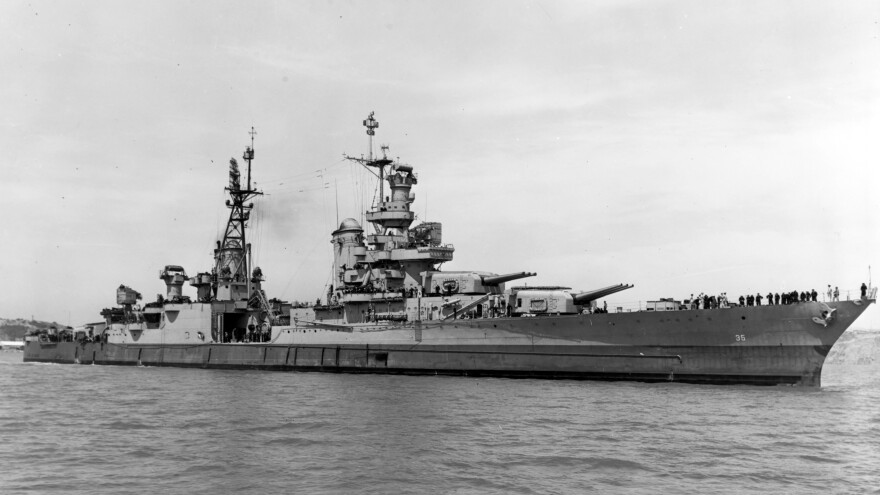For 72 years since the cruiser USS Indianapolis sank after being struck by Japanese torpedoes in the waning days of World War II, its exact resting place had been a mystery.
But a team of researchers led by Microsoft co-founder Paul Allen now says they have positively identified the wreckage, 18,000 feet below the surface in the Philippine Sea.

The sinking of the Indianapolis — on its return from a secret mission to deliver components for the atomic bomb that would be dropped days later on the Japanese city of Hiroshima — became the largest single disaster at sea in the history of the U.S. Navy.
After delivering its cargo to the tiny island of Tinian, north of Guam, the ship was on its way to the Philippines when it was hit by two torpedoes from the Imperial Japanese submarine I-58 on July 30, 1945.
Indianapolis sank in just 12 minutes, with 300 of her crew going down with the ship. With few lifeboats, many of the remaining 900 faced death by exposure or shark attack until they were spotted three days later by a U.S. Navy patrol plane. By the time they were reached by rescuers, only 317 of the crew of 1,196 aboard were still alive.
"To be able to honor the brave men of the USS Indianapolis and their families through the discovery of a ship that played such a significant role during World War II is truly humbling," Allen said on his website. "As Americans, we all owe a debt of gratitude to the crew for their courage, persistence and sacrifice in the face of horrendous circumstances. While our search for the rest of the wreckage will continue, I hope everyone connected to this historic ship will feel some measure of closure at this discovery so long in coming."
The ship's destruction and survivors' attack by sharks inspired a famous scene from the movie Jaws, in which Captain Quint (played by Robert Shaw), recounts the events.

In a court martial that became controversial years later, the captain of the Indianapolis, Charles B. McVay III, was found guilty of not running a "zig-zag" course to evade Japanese submarines. He was exonerated only in 2001, 33 years after his 1968 suicide by gunshot.
As The New York Times wrote in 2001:
"Captain McVay's defenders note that he had been given discretion — not ordered — to steer a zigzag course and had done so for a time, and that he had been advised there was little threat of enemy submarines.
Some historians, citing documents declassified years later, have attributed the slowness of the rescue to the secrecy surrounding the atomic bomb mission. Some have suggested, too, that senior Navy officers knew there might have been a Japanese submarine in the area but did not warn the cruiser out of fear of disclosing that the Navy had broken Japan's naval codes."
The Indianapolis itself remains the property of the U.S. Navy and its exact location will remain a secret, Allen says.
Capt. William J. Toti, a spokesman for the 22 survivors of the Indianapolis who are still alive, said on Allen's website that those men "have longed for the day when their ship would be found, solving their final mystery."
"They all know this is now a war memorial," he said.
Copyright 2021 NPR. To see more, visit https://www.npr.org.



